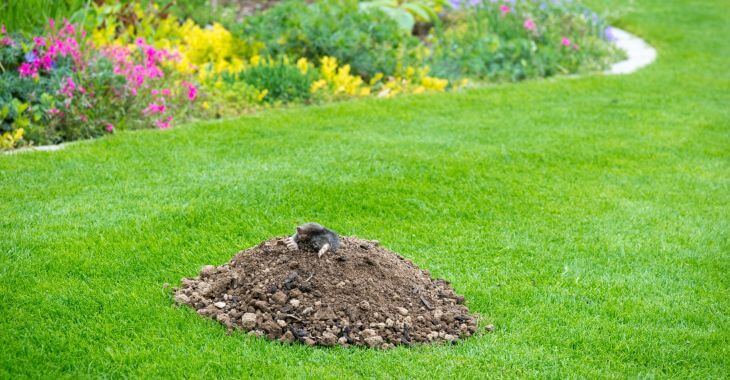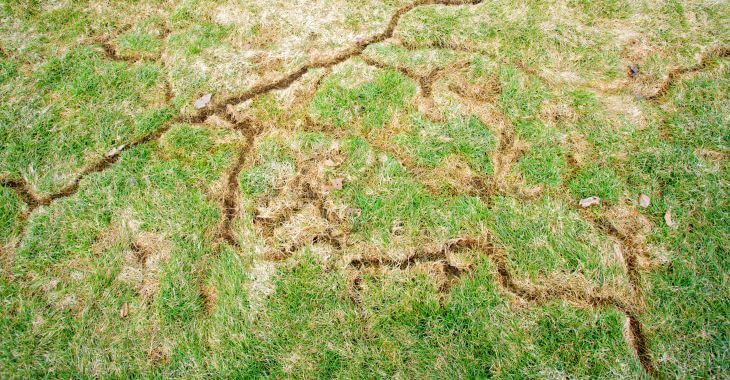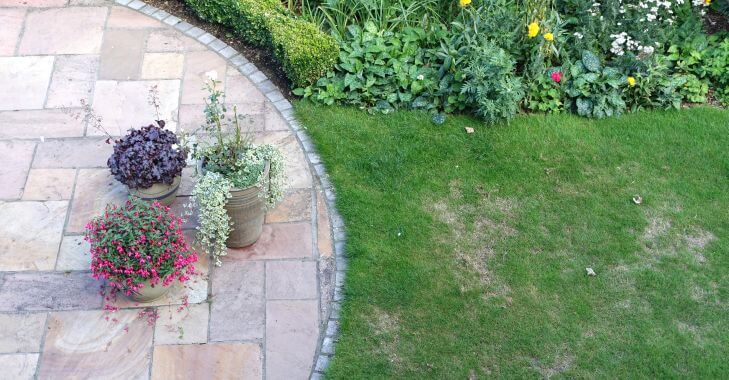Mole Damage to Lawn? What You Need to Know

Moles are known for their ability to tunnel underground, creating unsightly ridges and soft patches throughout your lawn. Their burrowing can uproot grass, destroy roots, and leave behind a mess of mole holes in yard areas.
Understanding how to identify, prevent, and repair this damage is key to maintaining a healthy lawn. Here is what you need to know about addressing mole damage to lawn.
Understanding Mole Damage to Lawn
Moles are small burrowing mammals that can wreak havoc on your lawn. Their tunneling creates raised ridges, soft spots, and mole holes in the yard, making the surface uneven. While they don’t eat grass, their underground activity can uproot roots, leading to dead patches and overall lawn distress.
Mole damage to lawn often resembles that of other pests like voles or mole crickets. Unlike voles, which chew on grass and plant roots, moles tunnel underground in search of insects. Their activity loosens the soil and disrupts the health of your grass, resulting in unsightly damage.
Identifying Mole Damage vs. Other Lawn Pests
Mole tunnels leave visible ridges and soft areas in your yard. If you spot these, along with small circular mounds of dirt, you likely have mole holes in the yard. However, distinguishing mole activity from other lawn pests is crucial to effective control and repair.
- Mole Cricket Damage to Lawn – Mole crickets feed on grass roots, causing thinning or dead patches. They also tunnel but leave less noticeable ridges compared to moles.
- Signs of Voles in Yard – Voles create surface runways that resemble small dirt trails, and they nibble on plant roots, stems, and bark, leaving visible chew marks.
- Moles – Moles don’t eat plants; their primary diet consists of insects like grubs and worms. Their tunnels disturb the soil, indirectly damaging the grass above.
By recognizing the distinct signs of each pest, you can determine the best course of action to protect your lawn.
How to Prevent and Repair Mole Damage
If you are dealing with mole damage to lawn, taking the right steps for prevention and repair is essential. Here’s what you can do:
- Reduce Food Sources: Moles thrive in soil rich with insects, especially grubs. Applying a grub control treatment can make your lawn less appealing to them.
- Flatten Tunnels and Reseed: Once mole activity has stopped, flatten the raised ridges and reseed affected areas to promote healthy grass growth.
- Use Traps or Repellents: Mole traps are effective in controlling mole populations, while repellents containing castor oil can deter them from returning.
- Improve Lawn Health: Keeping your lawn well-maintained with proper aeration, fertilization, and mowing can make it less attractive to burrowing pests.
If DIY methods do not resolve the issue, professional pest control services can provide effective solutions. Pest specialists can set up advanced trapping techniques, apply repellents, and offer long-term lawn care strategies to prevent future infestations.
Hiring experts ensure that mole damage to your lawn is properly addressed with minimal effort on your part. Moles are persistent and can quickly return if not properly managed.
Professional lawn care services can evaluate your property for vulnerabilities and suggest tailored strategies to keep your yard mole-free. They can also identify if the damage is due to mole cricket damage to lawn or signs of voles in yard areas.
Long-Term Strategies to Protect Your Lawn
Preventing future mole infestations is just as important as addressing current damage. Homeowners can take several measures to reduce the chances of moles returning and causing further lawn damage.
- Soil Management: Ensuring your lawn is well-aerated and not overly moist can make it less attractive to burrowing pests.
- Natural Deterrents: Certain plants, like marigolds and daffodils, are believed to repel moles and can be strategically placed in your yard.
- Fencing and Barriers: Installing underground barriers around garden beds or high-risk areas can prevent moles from tunneling into those spaces.
- Regular Lawn Maintenance: Routine mowing, fertilization, and irrigation management keep the grass healthy and can discourage mole activity.
By incorporating these long-term solutions, you can significantly reduce the risk of dealing with future mole damage to lawn areas.
When to Seek Help
If you notice repeated mole activity despite attempts to deter them, it may be time to seek professional help. Experts can assess your lawn for persistent issues and implement a targeted strategy to eliminate moles effectively.
Whether it is mole holes in yard spaces, mole cricket damage to the lawn, or signs of voles in yard areas, professional solutions ensure the best results.

Restoring your lawn after mole activity takes time, but with the right approach, you can achieve a lush and healthy yard once again. Whether through preventative measures or professional help, keeping moles and other pests at bay will improve the longevity of your lawn’s health.

